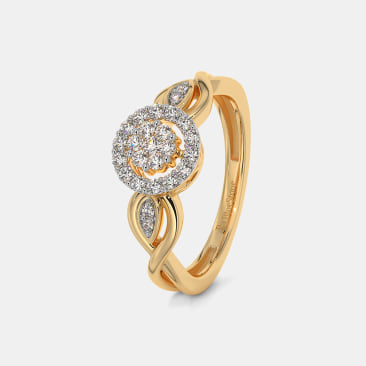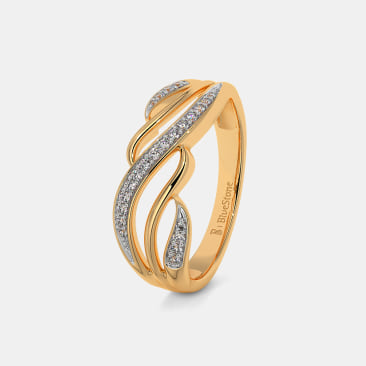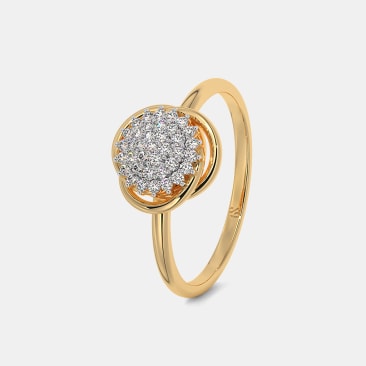Types of Diamond
A Comprehensive Guide
In the word of jewellery, there is nothing more sparkling than diamonds. Even the smallest of diamond trinkets – for instance, diamond nose pins or rings – have a sparkle few other gemstones can match. All that sparkle on diamond jewellery has a story to tell. Although most diamonds look the same, they are not created equal. In fact, gemmologists have classified these gems into different categories based on their chemical and physical properties. To classify them, gemmologists evaluate the stones for their atomic makeup. This helps them analyse their colour, their growth, and whether they are natural or treated. In this article, we give you a comprehensive outline of different types of diamonds and their features.
How Do We Classify Diamonds?
When buying diamond necklaces or rings or bangles, most people look for the cut, clarity, carat, and colour. (These features are called the 4Cs of diamonds. We will come to them later.) Seasoned buyers, however, also consider the type of diamond before they make a purchase. These sparkling gems are carbon compounds. They are basically made of pure carbon, but they often contain some trace elements such as boron and nitrogen. Such elements are acquired naturally during their formation. In some stones, they are intentionally added. This is often done during the process of synthesis or treatment in a lab.
Trace elements are not the only foreign bodies a diamond may contain. They almost always contain flaws in their carbon structure. Scientists refer to the presence of trace elements and flaws as optical defects. These defects are also called lattice defects. The presence, or even absence, of lattice defects affects its properties. The amount in which they are present also has an effect on the gemstones. Based on these aspects, there are two ways to classify diamonds, namely the consumer way and the technical way.
The Consumer Way of Classifying Diamonds
Most consumers do not get into the technical aspects of gemstones when they buy jewellery. Consumers often classify diamonds into four types based on their appearance. The four types are as follows:
Natural diamonds What do you think of when you hear the word diamond? A white sparkling rock found somewhere in the mines, right? That’s exactly what natural diamonds are! These naturally occurring gems are white or colourless.
Treated diamonds These are artificially enhanced versions of natural diamonds. These gems are mined just like regular diamonds. However, we manipulate their attributes through different kinds of treatments to make them look better. One of the treatments they are subjected to is inclusion filling. In this treatment, special material is used to hide the inclusions in the stone. Another treatment is the colour enhancement. Treatments are usually done on diamonds that cannot otherwise be sold in their natural form. Treated diamonds are sold for dramatically lower prices that their natural counterparts.
Man-made diamonds They are also commonly known as lab-grown diamonds. Man-made gems have become a trend recently. And their popularity is on the rise owing to the fact that they are technological products. With the evolution of technology behind man-made diamonds, their manufacturing becomes cheaper. They are only going to become cheaper in the coming years.
Natural coloured diamonds These are a rarity in the world of diamonds. They occur in a variety of colours, such as purple, blue, red, green, and black. The most common colours are, however, pink and canary yellow.
The Technical Way of Classifying Diamonds
As a buyer, it’s important for you to be aware of the technical information of classification. Wondering why? It’s because the presence of trace elements, even small amounts of them, can impact the stone’s price drastically. They also cause the formation of impurities in the stone.
So what are impurities and how are they formed in a gemstone? In the carbon lattice structure in diamonds, nitrogen or other trace elements often replace carbon atoms. These carbon substitutes move inside the structure and often cluster together. This constitutes for chemical impurities, which are not visible to the naked eye. However, they affect the gemstone’s appearance to a considerable extent. So here are the different types of diamonds based on their technical differences.
Type Ia This type of diamonds has large clusters of nitrogen in the crystal lattice. As a result, the stones emit a yellowish tint. The nitrogen atom aggregates, especially the ones in groups of three, absorb blue spectrum wavelength of visible light. Therefore, the light they reflect appears yellow.
Type IIa These are the most valuable diamonds sought by investors and collectors. They are rare and contain negligible or no nitrogen impurities. They form under high pressure for a long period of time. They have an uneven shape. The lack of impurities makes it reflect light as it is and gives it a spectacular appearance. Almost all of the world’s most popular diamonds fall under this type. The Kohinoor is a famous example.
Type Ib These are less common than the other types of diamonds. In type IIb diamonds, single nitrogen atoms are scattered in the lattice structure instead of clusters. This makes the diamond absorb blue spectrum wavelength of visible light. And therefore, these types of diamonds have an intense yellow, brown, or orange colour.
Type IIb Diamonds classified as type IIb lack nitrogen atoms. Instead, they contain boron as the trace element. The presence of boron makes type IIb diamonds conduct electricity. It also makes them appear a shade of either blue or even bluish gray as boron absorbs red spectrum wavelength of visible light. This type of diamonds are also rare and, therefore, very valuable.
Types of Diamonds vs. the Four Cs
Read any write-up on diamonds and you are likely to come across the term 4Cs. What are 4Cs and how are they different from gemstone types? Most people think that the type of a diamond depends on its cut, colour, clarity, or carats. These features that make up the 4Cs are qualities of diamond grading. They are not the types of diamond.
Round, cushion, emerald, princess, baguette, oval, marquise, trillion, etc. are some of the popular cuts used for shaping a diamond. Based on the colour, diamonds are graded alphabetically such as D – F (totally colourless), G – J (near colourless), K – M (with slight tints), N – R (very light yellow), and S – Z (very light yellow or brown). Similarly, these gems can be divided into different clarity grades such as FL (completely flawless), VVS1 and VVS2 (very very slightly included), and VS1 and VS2. Stones of lower clarity come under the grades SI1, SI1, I1, I2, and I3.
As a buyer, collector, or investor, taking your diamond knowledge to the next level only has advantages. Knowing the different types gives you an upper hand to make informed choices. Being aware of both the physical and the chemical properties underlying their classification will help you invest in the right stones.




